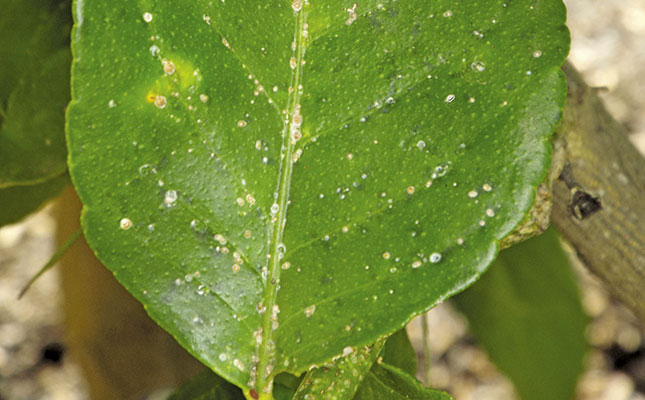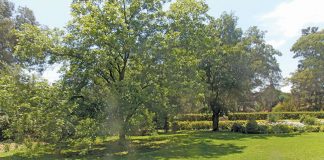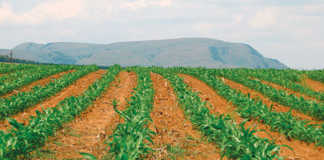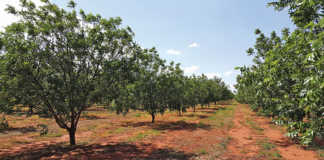
Scientific name: Aonidiella aurantii
Family: Diaspididae
Distribution: Worldwide
Description
Red scale, a sap-sucking insect, is one of the most disruptive pests in the citrus industry. It gets its common name from the circular reddish-brown scale (cover) which it attaches to the plant. In the case of the female, this cover is approximately 1,8mm in diameter and the female lives under it for its entire life. Males live under a smaller elongated cover. They emerge as winged insects after four months, mate and die within hours.
In minor infections, red scale may go unnoticed, but in heavy infestations, the fruit takes on a speckled appearance.
Red scale has been recorded on more than 200 plant species. In addition to citrus, it will attack bananas, papayas, guavas, olives, potato tubers, ornamental plants and cycads. Although found on all parts of the plant, red scale is more noticeable on the fruit. As the female feeds, it produces toxic saliva that causes small yellow spots.
A heavy infestation can lead to discolouration, drooping leaves, deformed shoots and severe damage to fruit-bearing twigs. In some instances, the fruit may become unmarketable.
Reproduction
The female gives birth to between 100 and 150 live young. They emerge from beneath the protective cover as crawlers, and can be spread by wind, birds or farm workers picking the fruit. When a crawler settles in a suitable spot, it begins feeding by inserting its mouthparts in the underlying plant tissue and sucking the sap.
Control measures
Control of red scale should be aimed at preventing the insect establishing itself.
- Chemical: The widespread use of chemicals to control red scale has led to many cases of resistance against pesticides such as chlorpyrifos (Lorsban) and methidathion (Supracide). As a result, many growers now use insect growth regulators such as buprofezin (Applaud) and Pyriproxyfen (Esteem). However, these can lead to secondary pest infestations. An extension officer should be able to provide up-to-date advice on the best chemicals to use. Neem oil has been shown to be effective as a control measure.
- Natural predators: Several species of parasitoid wasps and ladybirds can be used as biological control agents. A problem, however, is that red scale is often guarded by ants, which obtain honeydew from them.
The first step, therefore, is to prevent ants from gaining access to the scale by wrapping a barrier around the tree trunk. I use aluminium foil, over which the ants cannot climb. In addition, ensure that the tree’s leaves do not touch the ground to prevent the ants from crawling onto the tree. This series is intended mainly as a guide to identifying pests. The control methods discussed are merely suggestions. For help with area- or crop-specific measures, consult your agricultural extension officer.
Paul Donovan, based in Botswana, promotes the protection and use of biological control agents and advises farmers on the best ways to control crop pests.













